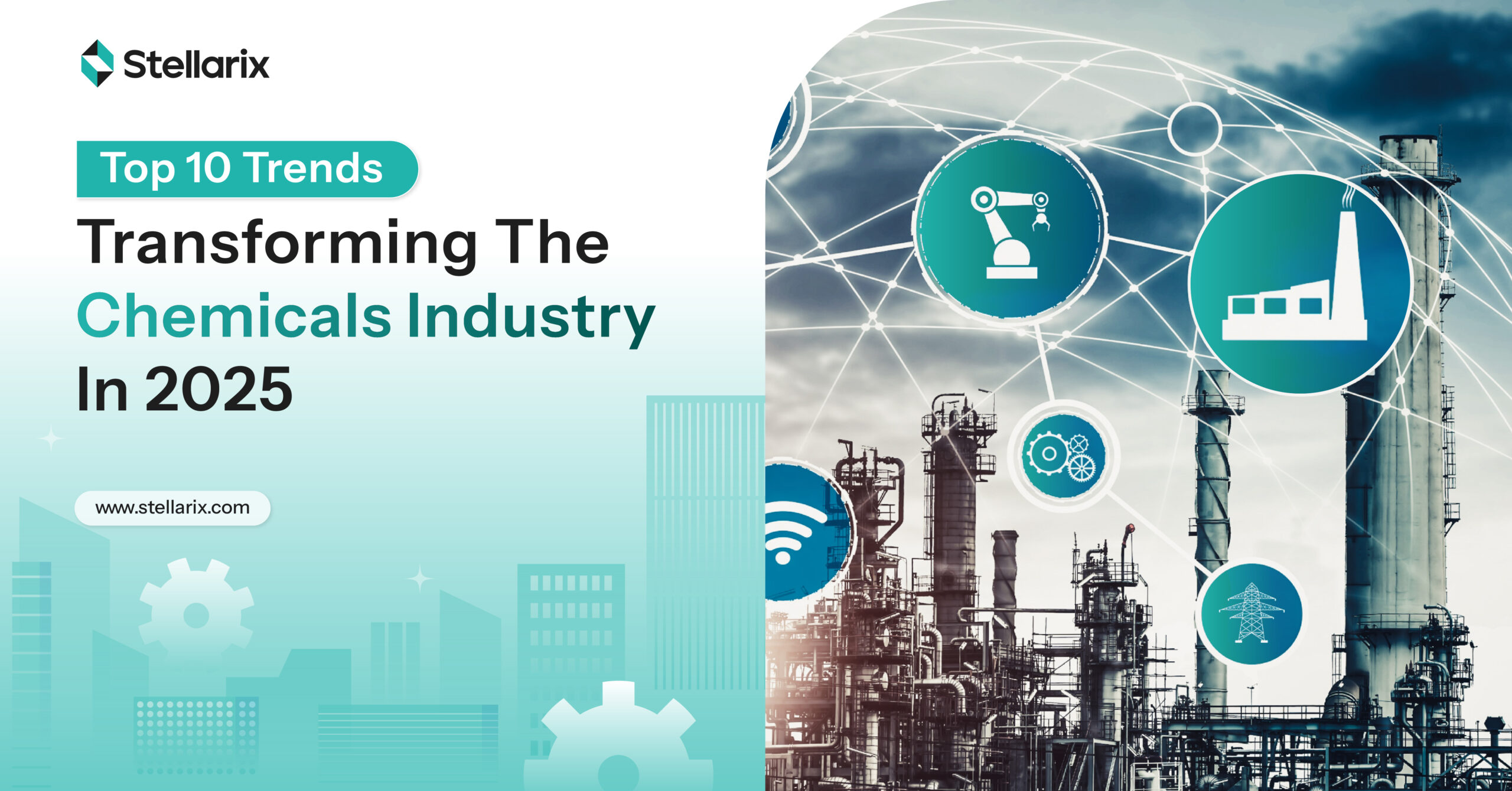The chemicals industry, one of the central cogs of the global economy, is on its way towards significant transformation. These developments result from the disruptions emanating from the pandemic that changed consumer preferences, market expectations, and business value chains for good. Chemical consulting experts suggest these emerging trends can be classified into three main themes: automation, digitalization, and decarbonization. Let’s take a closer look at the major changes that will reshape the industry in 2025:
1. Wide Adoption of Innovative Manufacturing Techniques
The rising regulatory pressures and demand for the circular economy are compelling the adoption of innovative manufacturing techniques. In 2024, innovative techs like automation, nanotechnology, and additive manufacturing penetrated chemical production processes deeper; the practice is expected to reach new heights this year as well. Apart from reliability and efficiency, these technologies ensure waste reduction, a key expectation from this sector worldwide.
2. Increasing Investments In Research & Development
The rising focus on greener products and alternatives to hazardous chemicals has increased the investments in R&D effectively. Along with this, considerable research efforts are also being made for better integration of AI, ML, robotics, and IoT in production and innovation processes. A larger part of venture capital is flowing towards startups excelling in green chemistry, carbon capture techniques, and alternative feedstocks.
3. Rise Of Specialty Chemicals
There is a rise in demand for specialty chemicals due to growing end-use in several industries. These include packaging, medical, construction, electronics, and automotive sectors. Apart from environmental awareness, this rise can also be attributed to technological advancements in material sciences, nanotechnology as well as biotechnology.
4. Green Chemistry
As industries move away from fossil fuels, renewable and bio-based feedstocks are expected to take the lead paving the way for green chemistry. It will play a key role in reducing the impact of hazardous substances. The pace of transition to this aspect has been slow, however, stakeholders are coming together to speed up the pace. The market size of green chemistry chemicals is expected to cross $129 billion by the end of this year at a CAGR of 11.67%.
5. Sustainability Takes Center Stage
Sustainability is no more a fad but a basic requisite. As more and more companies are facilitating practices supporting the circular economy, green chemistry, and recycling technologies, it will shape the foundation for sustainable business practices in this industry. The quest for alternative materials, net-zero commitments, and adoption of renewable energy sources will drive this trend further this year with rising collaboration with sustainability services providers.
6. Consolidation Goes On
The chemical industry is undergoing a new consolidation phase defined by portfolio restructuring, acquisitions, mergers, and collaborations. Most key stakeholders are lining up to position themselves to turn challenges into opportunities. For instance, BASF introduced a new catalyst business named BASF Environmental Catalyst while LyondellBasell acquired APK, a solvent recycling company in 2024. The key focus is either on high-potential segments or specialization. It is expected that the trend will continue in 2025.
7. Supply Chain Evolution
There is a growing trend of localized production to align with the changing market dynamics and develop supply chain resilience. Friendshoring is a rising priority since companies are looking to neutralize geopolitical disruptions, manage costs, and bring down transportation emissions. It is an amazing opportunity that suppliers may leverage to establish stronger regional collaborations and synchronize their distribution networks.
8. Demographic Shifts In Workforces
The chemical industry is struggling with an aging workforce that could fill the gap left by the retirement of professionals with critical skills and knowledge. It also becomes crucial due to the rising integration of digital and advanced technologies in production processes. Technical teams will need to take better initiatives for knowledge transfer and adopt advanced solutions like generative AI platforms to reduce the skill gap.
9. Bigger Investments In AI, Digitalization, And Data
A year or two ago, AI was nothing more than a possibility for several businesses. However, with the rising implementation of Generative AI in product design, traceability, and research. Several chemical companies are now following suit to accelerate innovation and product efficiency. AI-powered platforms are embedded with features ranging from vertical domain expertise to lead generation, account management, and imparting in-depth product knowledge to the sales team.
10. More Cash Flow Towards Environmental, Social, and Governance
As the chemical industry rushes to adopt sustainability initiatives, investments in waste recycling and reduction strategies are on the rise. Also, chemical companies are investing a considerable amount in their workers’ safety along with updating product handling, safety, and incident reporting protocols. It could be used as a promotional strategy to increase user engagement.
Conclusion
This year will be rewarding for companies that adhere to agile adaptation and accelerated innovation against the present set of challenges. Aligning business strategies with these trends will be crucial in gaining a competitive edge and maintaining a strong foothold in this market.



































